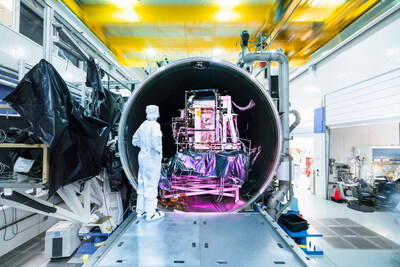RTX's Raytheon completes critical milestone for VIIRS program
Company completes thermal vacuum testing of the fourth sensor
The final of the four JPSS VIIRS Sensors, called J4, is in environmental testing and successfully completed Thermal Vacuum tests in late 2023. This milestone was completed ahead of schedule, ensuring that the VIIRS program is on track to deliver the final sensor on time for satellite integration in 2024.
"The recent thermal vacuum testing on J4 was the most successful and efficient cycle in the program's history, demonstrating the team's experience and the collaboration between NASA and Raytheon that allowed for seamless test execution," said Sandy Brown, president, Space Systems for Raytheon.
NASA's Joint Polar Satellite System is the
About Raytheon
Raytheon, an RTX business, is a leading provider of offensive and defense solutions to help the
About RTX
With more than 185,000 global employees, RTX pushes the limits of technology and science to redefine how we connect and protect our world. Through industry-leading businesses – Collins Aerospace, Pratt & Whitney, and Raytheon – we are advancing aviation, engineering integrated defense systems, and developing next-generation technology solutions and manufacturing to help global customers address their most critical challenges. The company, with 2023 sales of
For questions or to schedule an interview, please contact corporatepr@rtx.com.
![]() View original content to download multimedia:https://www.prnewswire.com/news-releases/rtxs-raytheon-completes-critical-milestone-for-viirs-program-302110126.html
View original content to download multimedia:https://www.prnewswire.com/news-releases/rtxs-raytheon-completes-critical-milestone-for-viirs-program-302110126.html
SOURCE RTX








